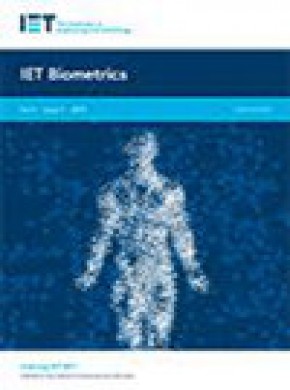
Gold OA文章占比:75.93%
OA被引用占比:0.0503...
開源占比:0.5748
研究類文章占比:94.44%
國際標準簡稱:IET BIOMETRICS
人氣 600
《Iet Biometrics》是一本專注于COMPUTER SCIENCE, ARTIFICIAL INTELLIGENCE領域的English學術期刊,創刊于2012年,由Wiley出版商出版,出版周期Bi-monthly。該刊發文范圍涵蓋COMPUTER SCIENCE, ARTIFICIAL INTELLIGENCE等領域,旨在及時、準確、全面地報道國內外COMPUTER SCIENCE, ARTIFICIAL INTELLIGENCE工作者在該領域的科學研究等工作中取得的經驗、科研成果、技術革新、學術動態等。該刊已被SCIE數據庫收錄,在中科院最新升級版分區表中,該刊分區信息為大類學科計算機科學3區,2023年影響因子為1.8。
The field of biometric recognition - automated recognition of individuals based on their behavioural and biological characteristics - has now reached a level of maturity where viable practical applications are both possible and increasingly available. The biometrics field is characterised especially by its interdisciplinarity since, while focused primarily around a strong technological base, effective system design and implementation often requires a broad range of skills encompassing, for example, human factors, data security and database technologies, psychological and physiological awareness, and so on. Also, the technology focus itself embraces diversity, since the engineering of effective biometric systems requires integration of image analysis, pattern recognition, sensor technology, database engineering, security design and many other strands of understanding.
The scope of the journal is intentionally relatively wide. While focusing on core technological issues, it is recognised that these may be inherently diverse and in many cases may cross traditional disciplinary boundaries. The scope of the journal will therefore include any topics where it can be shown that a paper can increase our understanding of biometric systems, signal future developments and applications for biometrics, or promote greater practical uptake for relevant technologies:
Development and enhancement of individual biometric modalities including the established and traditional modalities (e.g. face, fingerprint, iris, signature and handwriting recognition) and also newer or emerging modalities (gait, ear-shape, neurological patterns, etc.)
Multibiometrics, theoretical and practical issues, implementation of practical systems, multiclassifier and multimodal approaches
Soft biometrics and information fusion for identification, verification and trait prediction
Human factors and the human-computer interface issues for biometric systems, exception handling strategies
Template construction and template management, ageing factors and their impact on biometric systems
Usability and user-oriented design, psychological and physiological principles and system integration
Sensors and sensor technologies for biometric processing
Database technologies to support biometric systems
Implementation of biometric systems, security engineering implications, smartcard and associated technologies in implementation, implementation platforms, system design and performance evaluation
Trust and privacy issues, security of biometric systems and supporting technological solutions, biometric template protection
Biometric cryptosystems, security and biometrics-linked encryption
Links with forensic processing and cross-disciplinary commonalities
Core underpinning technologies (e.g. image analysis, pattern recognition, computer vision, signal processing, etc.), where the specific relevance to biometric processing can be demonstrated
Applications and application-led considerations
Position papers on technology or on the industrial context of biometric system development
Adoption and promotion of standards in biometrics, improving technology acceptance, deployment and interoperability, avoiding cross-cultural and cross-sector restrictions
Relevant ethical and social issues
| 大類學科 | 分區 | 小類學科 | 分區 | Top期刊 | 綜述期刊 |
| 計算機科學 | 4區 | COMPUTER SCIENCE, ARTIFICIAL INTELLIGENCE 計算機:人工智能 | 4區 | 否 | 否 |
| 大類學科 | 分區 | 小類學科 | 分區 | Top期刊 | 綜述期刊 |
| 計算機科學 | 3區 | COMPUTER SCIENCE, ARTIFICIAL INTELLIGENCE 計算機:人工智能 | 4區 | 否 | 否 |
| 大類學科 | 分區 | 小類學科 | 分區 | Top期刊 | 綜述期刊 |
| 計算機科學 | 3區 | COMPUTER SCIENCE, ARTIFICIAL INTELLIGENCE 計算機:人工智能 | 4區 | 否 | 否 |
| 大類學科 | 分區 | 小類學科 | 分區 | Top期刊 | 綜述期刊 |
| 工程技術 | 4區 | COMPUTER SCIENCE, ARTIFICIAL INTELLIGENCE 計算機:人工智能 | 4區 | 否 | 否 |
| 大類學科 | 分區 | 小類學科 | 分區 | Top期刊 | 綜述期刊 |
| 計算機科學 | 3區 | COMPUTER SCIENCE, ARTIFICIAL INTELLIGENCE 計算機:人工智能 | 4區 | 否 | 否 |
| 大類學科 | 分區 | 小類學科 | 分區 | Top期刊 | 綜述期刊 |
| 計算機科學 | 4區 | COMPUTER SCIENCE, ARTIFICIAL INTELLIGENCE 計算機:人工智能 | 4區 | 否 | 否 |
中科院分區:中科院分區是SCI期刊分區的一種,是由中國科學院國家科學圖書館制定出來的分區。主要有兩個版本,即基礎版和升級版。2019年中國科學院文獻情報中心期刊分區表推出了升級版,實現了基礎版和升級版的并存過渡;升級版是對基礎版的延續和改進,將期刊由基礎版的13個學科擴展至18個,科研評價將更加明確。
| 按JIF指標學科分區 | 收錄子集 | 分區 | 排名 | 百分位 |
| 學科:COMPUTER SCIENCE, ARTIFICIAL INTELLIGENCE | SCIE | Q3 | 136 / 197 |
31.2%
|
| 按JCI指標學科分區 | 收錄子集 | 分區 | 排名 | 百分位 |
| 學科:COMPUTER SCIENCE, ARTIFICIAL INTELLIGENCE | SCIE | Q4 | 152 / 198 |
23.48%
|
JCR分區:JCR(Journal Citation Reports)由科睿唯安公司(前身為湯森路透)開發。JCR沒有設置大類,只將期刊分為176個具體學科,也就是中科院分區中的小類學科。基于不同學科的當年影響因子高低進行排序,將期刊的數量均勻分為四個部分,Q1區代表學科分類中影響因子排名前25%的期刊,以此類推,Q2區為前25%-50%期刊,Q3區為前50%-75%期刊,Q4區為75%以后期刊。
CiteScore排名:
| 學科類別 | 分區 | 排名 | 百分位 |
| 大類:Computer Science 小類:Signal Processing | Q2 | 41 / 131 |
69%
|
| 大類:Computer Science 小類:Computer Vision and Pattern Recognition | Q2 | 34 / 106 |
68%
|
| 大類:Computer Science 小類:Software | Q2 | 143 / 407 |
64%
|
CiteScore值計算方式:例如2024公布的CiteScore是將統計在 2020年-2023年間年所發表文章的引用次數除以在 2020年-2023年間所發表的發文總數。
CiteScore數據來源:是由全球著名學術出版商Elsevier(愛思唯爾)基于其Scopus數據庫推出的期刊評價指標。CiteScore指數以四年區間為基準來計算每本期刊的平均被引用次數,并提供期刊領域排名、期刊分區的相關信息,它的作用是測量期刊的篇均影響力。
近年中科院分區趨勢圖
近年IF值(影響因子)趨勢圖
影響因子:是美國科學信息研究所(ISI)的期刊引證報告(JCR)中的一項數據。指的是某一期刊的文章在特定年份或時期被引用的頻率,是衡量學術期刊影響力的一個重要指標。自1975年以來,每年定期發布于“期刊引證報告”(JCR)。
| 國家/地區 | 發文量 |
| India | 27 |
| CHINA MAINLAND | 23 |
| USA | 16 |
| England | 12 |
| GERMANY (FED REP GER) | 12 |
| Turkey | 11 |
| Spain | 9 |
| France | 8 |
| Italy | 8 |
| Portugal | 8 |
| 文章引用名稱 | 引用次數 |
| Strengths and weaknesses of ... | 24 |
| Robust gait recognition: a c... | 15 |
| Employing fusion of learned ... | 11 |
| Grey Wolf optimisation-based... | 10 |
| Unconstrained ear recognitio... | 10 |
| Secure multimodal biometric ... | 9 |
| Hybrid robust iris recogniti... | 9 |
| Domain adaptation for ear re... | 7 |
| Ear verification under uncon... | 7 |
| ScoreNet: deep cascade score... | 6 |
| 被引用期刊名稱 | 數量 |
| IET BIOMETRICS | 53 |
| IEEE ACCESS | 45 |
| MULTIMED TOOLS APPL | 27 |
| SENSORS-BASEL | 24 |
| ACM COMPUT SURV | 19 |
| IEEE T INF FOREN SEC | 17 |
| PATTERN RECOGN LETT | 15 |
| EXPERT SYST APPL | 12 |
| APPL SCI-BASEL | 11 |
| NEUROCOMPUTING | 11 |
| 引用期刊名稱 | 數量 |
| PATTERN RECOGN | 106 |
| IEEE T PATTERN ANAL | 99 |
| IEEE T INF FOREN SEC | 79 |
| IEEE T IMAGE PROCESS | 62 |
| IET BIOMETRICS | 53 |
| PATTERN RECOGN LETT | 49 |
| NEUROCOMPUTING | 39 |
| EXPERT SYST APPL | 26 |
| IMAGE VISION COMPUT | 22 |
| IEEE T CIRC SYST VID | 19 |
1、建議稿件控制10頁以上,文章撰寫語言為英語;(單欄格式,單倍行距,內容10號字體,文稿類型包含:原創研究(Original Research)、案例報告(Case Report)、文獻綜述(Literature Review)等;文件格式包含word、PDF、LaTeX等。
2、稿件重復率控制10%以內,論文務必保證原創性、圖標、公式、引文等要素齊備,保證附屬資料的完整。已發表或引用過度的文章將不會被出版和檢索,禁止一稿多投,拒絕抄襲、機械性的稿件。
3、稿件必須有較好的英語表達水平,有圖,有表,有公式,有數據或設計,有算法(方案,模型),實驗,仿真等;參考文獻控制25條以上,參考文獻引用一半以上控制在近5年以內。
圖片和圖表要求:1、建議使用TIFF、EPS、JPEG格式 ,TIFF格式 使用LZW壓縮。
2、文件大小最大不超過20MB,不要以單個文件的形式上傳數據。
3、彩色圖片的分辨率≥300dpi;黑白圖片的分辨率在≥500dpi;line art圖片類型的分辨率≥1000dpi;色彩模式建議采用RGB,除非期刊注明要CMYK。
4、線條不要細于0.25pt,也不能太粗,超過1.5pt,過細或過粗都影響美觀。
5、表格一般和manuscrript放置在一個word文檔里部分期刊 需要單獨上傳表格。
作者信息:1、包括作者姓名、最高學位,作者單位(精確到部門),郵箱,地址,郵編,關鍵詞,內容,總結,項目基金,參考文獻,作者相片+簡介(一定要確保作者信息準確無誤,提交稿件之后這部分不能再作改動)。
更多征稿細則請查閱雜志社征稿要求。本站專注期刊咨詢服務十年,確保SCI檢索,稿件信息安全保密,合乎學術規范不成功不收費,詳情請咨詢客服。
WILEY, 111 RIVER ST, HOBOKEN, USA, NJ, 07030-5774
若用戶需要出版服務,請聯系出版商:WILEY, 111 RIVER ST, HOBOKEN, USA, NJ, 07030-5774。
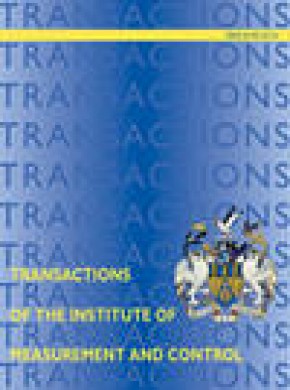
中科院分區 4區
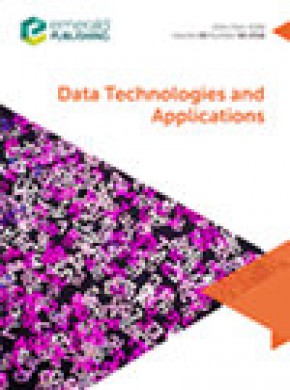
中科院分區 4區

中科院分區 4區

中科院分區 4區
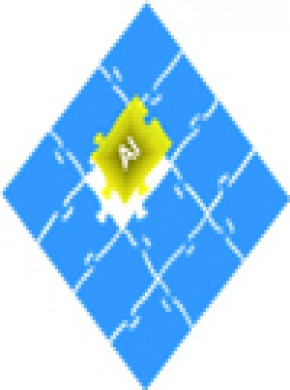
中科院分區 4區

中科院分區 4區

中科院分區 4區
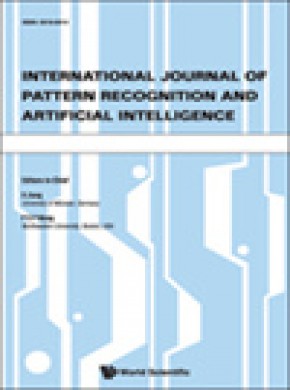
中科院分區 4區